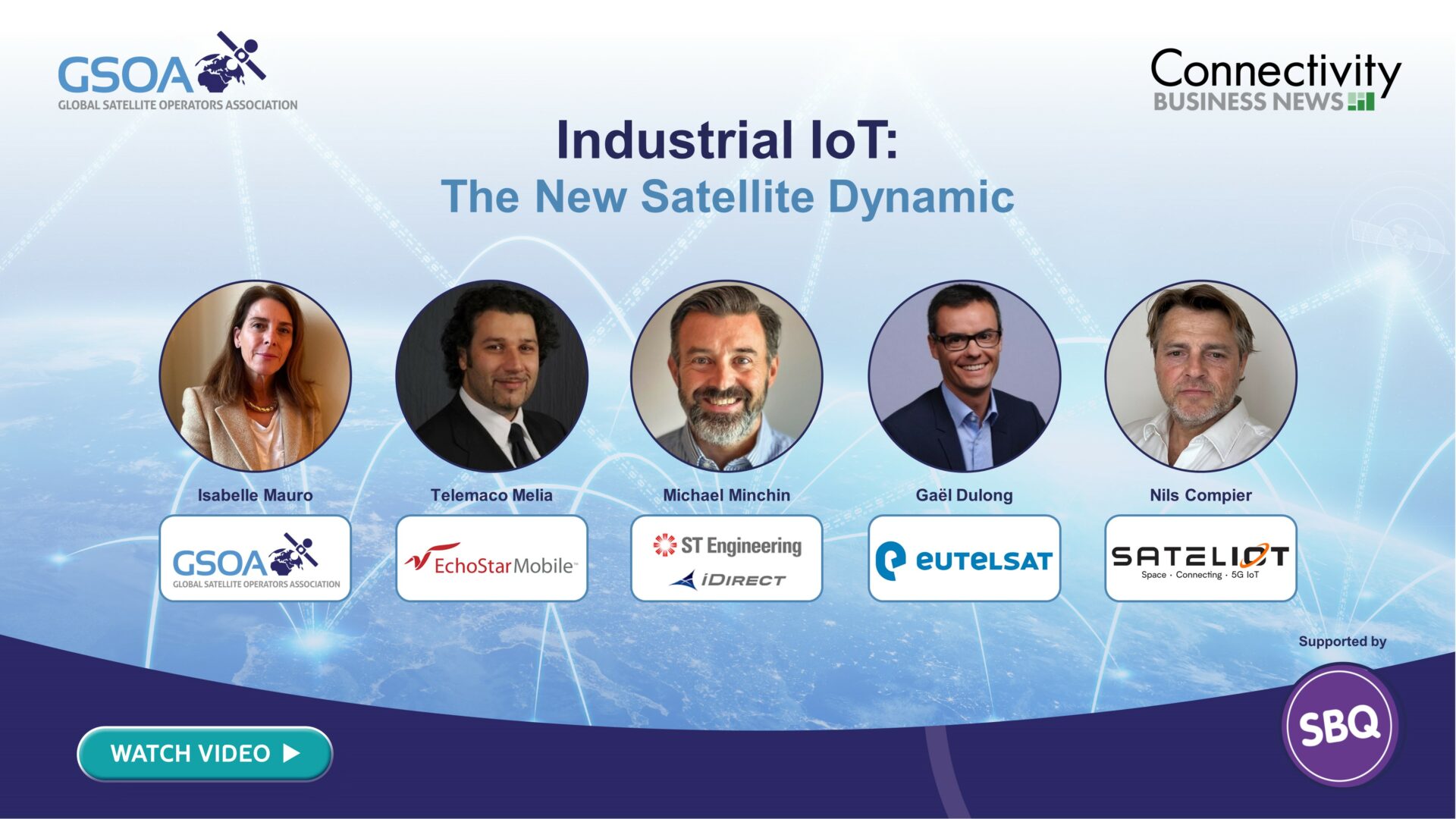Industrial IoT: The New Satellite Dynamic

Thursday, 29 June 2023 3:00 pm UK time
The phrase ‘Internet of Things’ is mostly associated with the connected devices in the home and smart city street sensors. However, in combination with 5G, many more opportunities are created for businesses to leverage the internet of things (IoT) – there is a whole new world of the Industrial Internet of Things (IIoT). IoT is connecting Things and People, IoT and satellite for the service of the greater good.
The webinar brought together several panellists with their unique views on the topic: GEO and MEO satellite operator, satellite operator that offers satellite IoT connectivity over standard LEO 5G NTN NB-IoT protocol, technology and solutions providers.
IoT is a B2B technology that can succeed only with cross industry collaboration and partnerships to enter different verticals such as mining, oil & gas, transportation, utilities, construction, agriculture, and many more.
There are many drivers for the future expansion of the IoT products, but most people agree that integration, interoperability, and standardisation must be at the core of the next phase and broader uptake in order to increase cost efficiency for the ultimate benefit of consumers.
Q & A continued….
Thank you to our audience for taking an active part by asking many questions. We ran out of time to respond to the questions below but our panellists were kind enough to answer after the event ended…
1. In which part in the network the conversion will happen? And the last mile of the connection to the sensor will be terrestrial or satellite?
Gaël Dulong (Eutelsat): In the ELO project, we offer a direct communication from a LoRA device to the satellite. Then, the message is collected and lands to our ground segment, and finally routed to the partner’s or customer’s LoRa Network Server.
2. Does each IoT unit have to be connected to satellite or one of them? Which one?
Gaël Dulong (Eutelsat): Natively, each IoT unit can be connected, but the idea of a gateway that gathers several IoT unit is also in our roadmap.
3. How LoRa and LoRaWAN /NB-IoT connect to satcom IoT, i.e., do they need any specific gateway at the ground segment? or an IoT node connect directly to satellite without a gateway?
Gaël Dulong (Eutelsat): The device communicates directly with the satellite via ISM Band.
4. What are key challenges? Thank you.
Gaël Dulong (Eutelsat):Coverage, cost, revisit time.
5. From a regulation stand point; are cellular bands already enabled for sat or 5G NTN will operate on what bands dedicated to sat?
Gaël Dulong (Eutelsat): There are some specific bands that are (i) authorized for satellite use by ITU; and (ii) standardized by 3GPP. National regulators can approve additional bands currently used as terrestrial (such as FCC has done with AST project).
6. GEO sat will be completely irrelevant?
Gaël Dulong (Eutelsat): Our ambition is to offer a GEO-LEO connectivity based on the requirements of the IoT use case.
7. Do you see solution in the C-Band Frequency spectrum?
Gaël Dulong (Eutelsat): Yes, possibly with our new Very-High Throughput satellite, but the form factor of the satellite terminal (i.e. dish) can be an obstacle.
8. Having one device supporting both terrestrial LoRa and LoRa by satellite is great but what is the impact on the price and on the energy consumption?
Gaël Dulong (Eutelsat): Good question, we are still at an early stage with our hybrid evaluation kit but we are open to share it shortly with device makers to assess the impact on the battery life.
